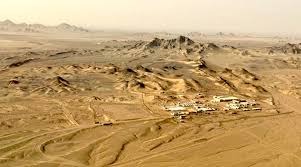
The targeted copper-gold mine in Balochistan, Reko Diq, is becoming a pronged lever for Pakistan to negotiate relief from the US's recently established sanctions. The $9 billion project is centrally American and sacrifices US economic interests by undermining competition on critical preferences. This project will serve with stragic aid towards Iran's counter policies and help relieve the newly imposed tariffs.
US Funding: Their Goals Have Been Met
The Canadian firm is leading the project and has been notably investing into its supply chain and financing. This has led towards a notable dependency on US aid, forcing the firm to seek out capital assistance from the US Export–Import Bank as well as international funding from Canada, Japan, and Saudi Arabia. Barrick further indicated compliance with the subsidized trading agenda from Washington by announcing intentions to source solar power technology from US suppliers rather than from China.
Global Strike: Lacking Advanced Technological Race
Once it becomes operational in 2028, Reko Diq will be one of the largest copper-gold mines in the world, firmly Reko Diq embodies US policy designed towards controlling the procurement of vital minerals. Other countries rich in gold have entered similar agreements partnerships, like with the recent cooperation Pakistan's foreign diplomate has advocated alongside the U.S. minister of state.
Ownership and Development Plans
Barrick Gold, Balochistan provincial government, and three Pakistani federal enterprises own the mine in a public-private partnership model. The Development Plan is multi-phased with an Initial Phase budget of $4.5 billion. The International Finance Corporation has pledged a $300 million loan toward the project.
Security and Export Strategy
Because the mine is near the borders of volatile Afghanistan and Iran, security is an ever-present concern. Despite the risks, Barrick intends to export their production via Port Qasim in Karachi, specifically avoiding transit through the Chinese-led Gwadar port for security reasons.
Infrastructure and Financing Outlook
The company hopes to raise $500 to $800 million by the end of 2025 for the construction of rail and transport infrastructure. The primary market for Copper exports will be the project's sponsors, though there is interest from European, Japanese, and Middle Eastern markets. There is further interest in the project from Manara Minerals of Saudi Arabia who is contemplating an investment.
Disputation on Refining Pertaining to Capability
With regards to local industrialization, the Prime Minister of Pakistan has shown support for local refining, which is contested by Barrick executives stating that the country does not currently possess the requisite infrastructure and energetic security for copper refining. Estimates of current production figures do not meet the thresholds necessary to make local refining economically operational.
Strategic Branding and Copper Shift
From gold to copper is a shift denoted more so by Barrick, who has also proposed the change to “Barrick Mining.” This is to further incorporated copper into the company's clean energy-transition portfolio while simultaneously showcasing its prominence within the company.
Read More: US Officials Claim Ninety Percent Of Ukraine Peace Deal Agreed By Kyiv And Europe

 Share
Share



